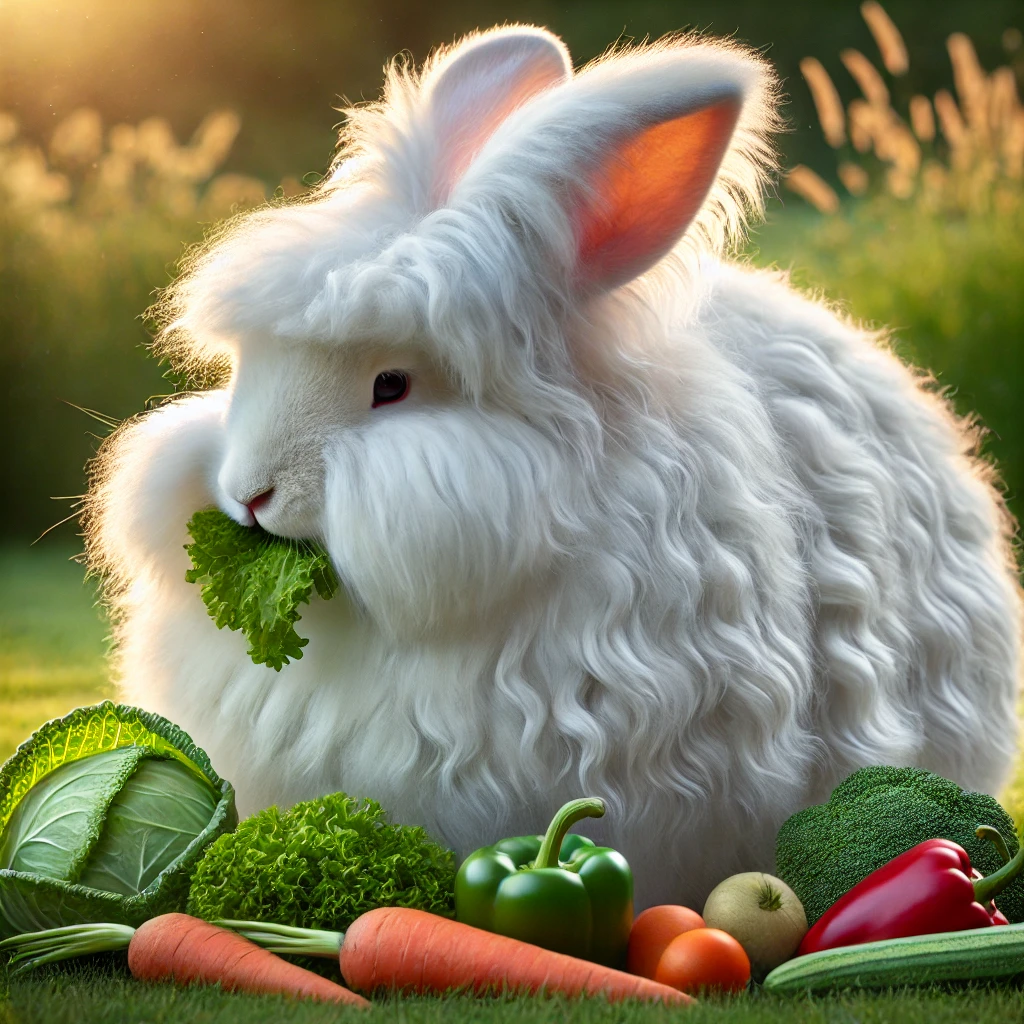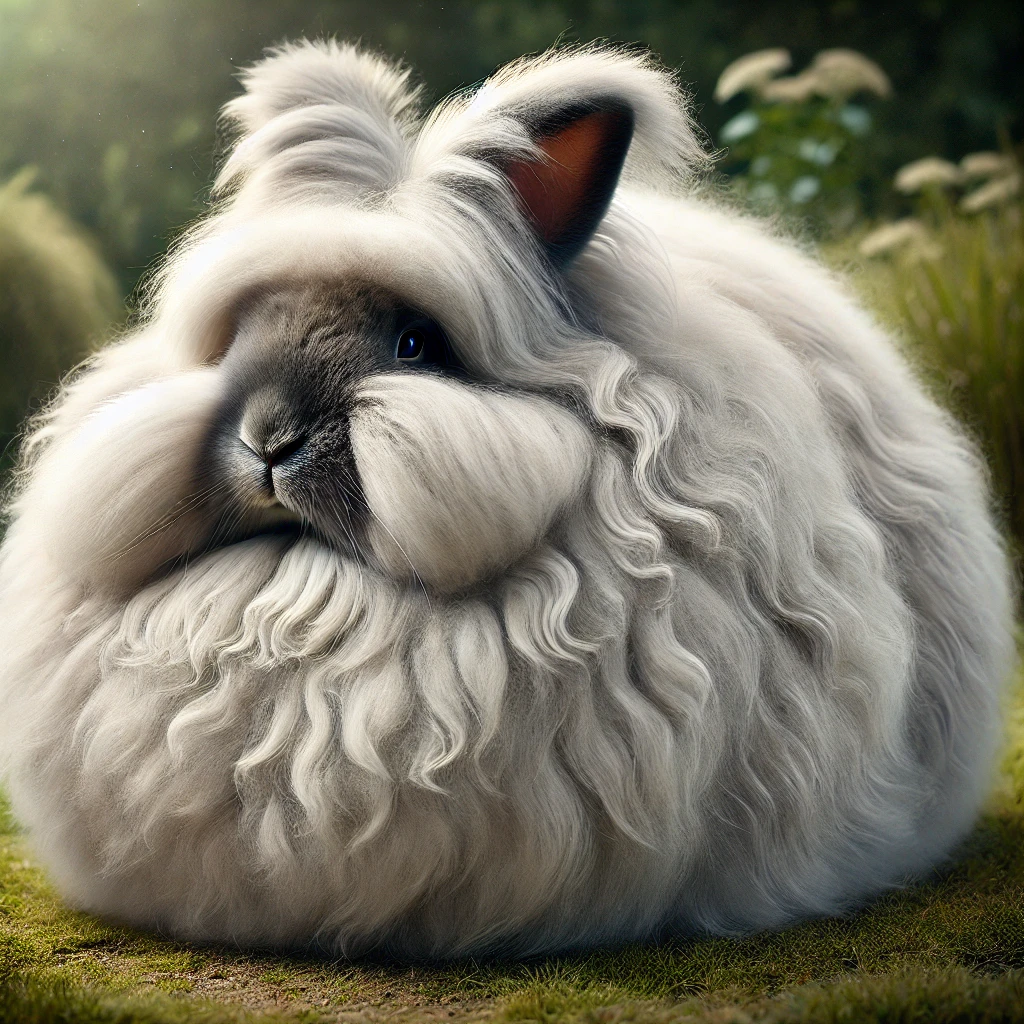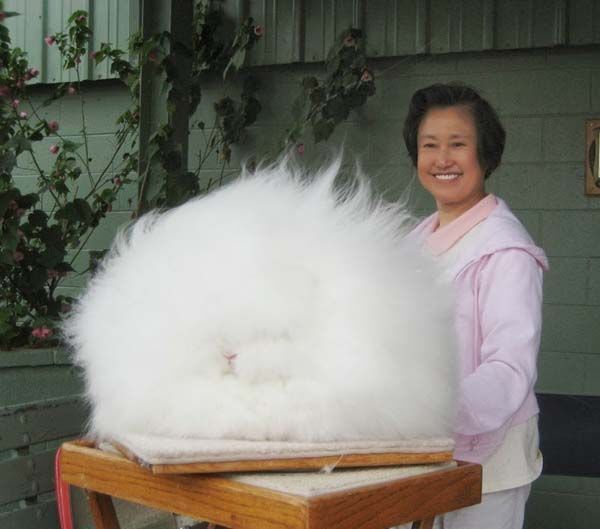Giant Angora rabbits are a fascinating breed known for their incredible wool production, large size, and gentle temperament. Whether you’re looking for a unique pet or a source of high-quality wool, the Giant Angora rabbit is a fantastic choice. In this comprehensive guide, we will cover everything you need to know about these wonderful rabbits, from their care and grooming to their temperament, health, and breeding. This guide is written in easy-to-understand English, making it perfect for both children and adults.
Quick Facts About Giant Angora Rabbits
| Fact | Details |
|---|---|
| Species Name | Oryctolagus cuniculus |
| Family | Leporidae` |
| Lifespan | 7 – 12 years |
| Size | Large (10 to 12 pounds) |
| Diet | Hay, rabbit pellets, fresh vegetables |
| Best Environment | Indoor pens or outdoor raised hutches |
| Wool Production | 1 to 2 pounds per year |
What is a Giant Angora Rabbit?
The Giant Angora rabbit is the largest of all Angora rabbit breeds, developed specifically for wool production. They were bred by crossing German Angoras with larger commercial breeds to create a rabbit capable of producing more wool while maintaining a calm and gentle personality.
Unlike other Angora rabbits, the Giant Angora has three types of fur on its body: soft underwool, awn fluff, and guard hairs. This unique combination gives them an incredibly fluffy appearance and makes their wool perfect for spinning into yarn.
Giant Angoras are prized for their high wool output, which can be harvested multiple times a year without harming the rabbit. Their docile temperament makes them a great choice for families, and their wool can be used in crafts or sold for profit.

How Much Does a Giant Angora Rabbit Cost?
The cost of a Giant Angora rabbit typically ranges between $50 and $200, depending on whether you’re buying from a breeder, pet store, or rabbit show. Show-quality rabbits and those from reputable breeders often cost more due to their pedigree and wool quality. The cost may also vary based on the rabbit’s age and health.
Cost Breakdown:
- Pet Store: $50 – $100
- Breeder: $100 – $200
- Ongoing Costs: Food, grooming supplies, vet care
If you’re looking to raise Giant Angoras for wool production, consider the initial cost as an investment, as their wool can provide additional income over time.
Giant Angora Rabbit Temperament and Behavior
Giant Angoras are recognized for their serene and gentle temperament. They are friendly and social animals that enjoy spending time with their owners and can even be trained to use a litter box. While they may be shy at first, regular handling helps them become more trusting and affectionate. Children, in particular, are often drawn to their fluffy appearance and gentle nature.
These rabbits enjoy interacting with humans and other pets, but they prefer a calm and quiet environment. They are also independent and can entertain themselves when given toys or objects to explore.
Key Traits:
- Temperament: Calm, friendly, gentle
- Socialization: Enjoys human interaction and can bond with other rabbits
- Best For: Families, individuals interested in wool production
Essential Care for a Giant Angora Rabbit
Caring for a Giant Angora rabbit involves meeting their basic needs, such as providing a proper diet, a clean environment, and regular grooming. Here’s a complete guide with all the essential information you need:
1. Housing
Giant Angoras need plenty of space to move around. A large indoor pen or outdoor raised hutch is ideal. The minimum recommended cage size is 36” x 36” x 24”, but larger is always better. These rabbits also need daily time outside their enclosure to stretch their legs and exercise.
When setting up their enclosure, ensure they have access to soft bedding, food, water, and a litter box if you’re keeping them indoors. Outdoor enclosures should protect from extreme temperatures, as Giant Angoras are sensitive to both heat and cold.
2. Bedding and Litter Box Training
You can train a Giant Angora to use a litter box, which helps keep their living area clean. Soft bedding materials, such as paper-based or wood shavings, work well. Just make sure to clean the enclosure regularly to prevent odors and maintain your rabbit’s health.
Grooming and Wool Care
Grooming is one of the most important aspects of owning a Giant Angora rabbit. Their wool grows continuously and needs to be harvested every 3 to 4 months. Regular grooming prevents matting and reduces the risk of wool block, a condition caused by ingesting too much fur during self-grooming.
Grooming Tips:
- Brushing: Brush your rabbit at least once a week to prevent tangles and mats.
- Shearing: Shear the wool every 3 to 4 months using clippers designed for wool.
- Nail Trimming: Regularly trim your rabbit’s nails to keep them healthy.
- Ear and Eye Care: Check their ears and eyes regularly to ensure they are clean and free from infection.
Shearing your rabbit not only keeps them comfortable but also provides you with high-quality wool that can be used for crafting or sold for profit.

Diet and Nutrition
A healthy diet is crucial for keeping your Giant Angora rabbit in top condition. Their diet should consist mainly of hay, which helps with digestion and prevents wool block. In addition, they should have access to fresh vegetables and a small amount of rabbit pellets.
Diet Breakdown:
- Hay: Unlimited supply of Timothy hay for digestion.
- Pellets: High-quality rabbit pellets provide essential nutrients.
- Vegetables: Fresh greens like romaine lettuce, kale, and spinach should be offered daily.
- Fruits: Occasional treats like apples and berries in small quantities.
- Water: Ensure fresh water is accessible to your rabbit at all times.
Health and Lifespan
With proper care, Giant Angora rabbits can live for 7 to 12 years. However, they are prone to a few health issues, the most common being wool block. A wool block occurs when rabbits ingest too much of their wool, causing a blockage in their digestive system. Regular grooming and a fiber-rich diet help reduce the risk.
Common Health Issues:
- Wool Block: Caused by ingesting fur; prevented by regular grooming and a fiber-rich diet.
- Dental Problems: Like all rabbits, their teeth grow continuously and need to be worn down with hay and chew toys.
- Obesity: Overfeeding can lead to weight issues, so portion control is important.
Regular vet checkups and a proper diet will help ensure your Giant Angora stays healthy throughout its life.
Breeding Giant Angora Rabbits
Breeding Giant Angora rabbits can be a rewarding experience, especially if you’re interested in producing high-quality wool or show rabbits. The breeding age for Giant Angoras is around 6 to 8 months, and the average litter size is between 6 to 8 kits.
Make sure both the male (buck) and female (doe) are healthy before breeding. The doe will need a nest box for birthing and raising the kits, and you should monitor her during the pregnancy, which lasts about 30 days.
Breeding Tips:
- Breeding Age: 6 to 8 months
- Litter Size: 6 to 8 kits
- Pregnancy Duration: 30 days
- Nest Box: Provide a warm, comfortable area for the doe to give birth.
Using Giant Angora Rabbits for Wool Production
One of the main reasons people raise Giant Angora rabbits is for their wool. These rabbits can produce 1 to 2 pounds of wool annually, which can be spun into yarn for knitting or felting. Angora wool is highly prized for its softness, warmth, and lightweight feel, making it a valuable product in the textile market.
Wool Business Potential:
- Wool Production: 1 to 2 pounds per rabbit annually
- Wool Value: Angora wool typically sells for $10 to $15 per ounce.
- Business Opportunity: Raising multiple rabbits can generate significant income from wool sales.
Are Giant Angora Rabbits Right for You?
Giant Angora rabbits are wonderful pets for those who are willing to invest time and effort into their care. They are calm, and gentle, and produce valuable wool that can be used for crafting or selling. However, they do require regular grooming, a proper diet, and a spacious environment to thrive.
If you’re ready to take on the responsibility, a Giant Angora rabbit can be a rewarding companion and a source of high-quality wool for years to come.
FAQs
- How big do Giant Angoras get?
Giant Angoras typically weigh between 10 to 12 pounds, making them the largest of the Angora breeds. - What is the difference between German Angora and Giant Angora?
German Angoras are bred for higher wool production, while Giant Angoras are larger in size and have three types of fur: underwool, awn fluff, and guard hairs. - What is the biggest Angora?
The Giant Angora is the largest of all Angora rabbit breeds. - Why is Angora so expensive?
Angora is expensive due to its softness, warmth, and the labor-intensive process of grooming and harvesting the wool. - Is Angora fur banned?
In some countries and regions, the production of Angora fur is banned due to concerns over animal welfare, but it is still legal in many places. - How expensive is Angora?
Angora wool can cost around $10 to $15 per ounce, depending on its quality and the source.




Leave a Reply